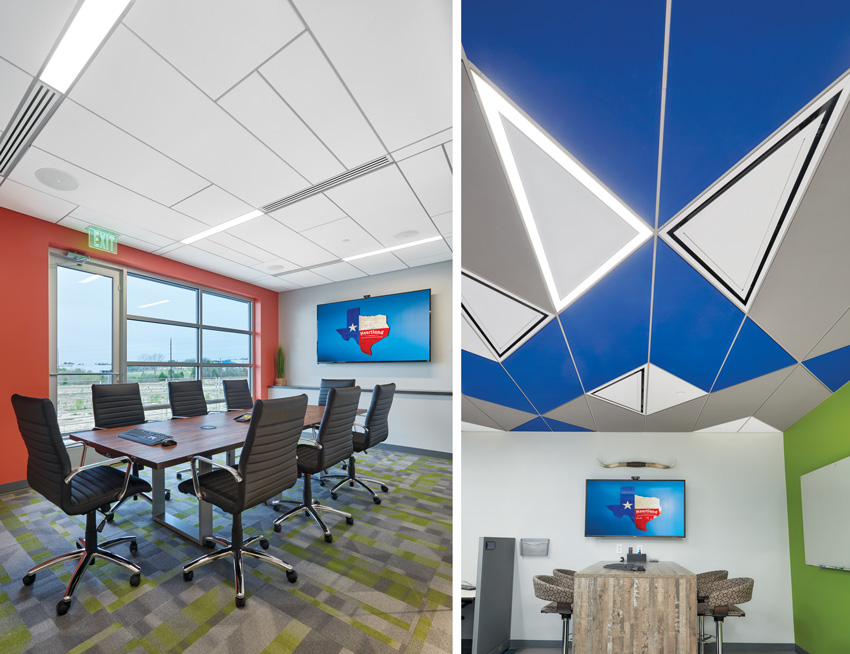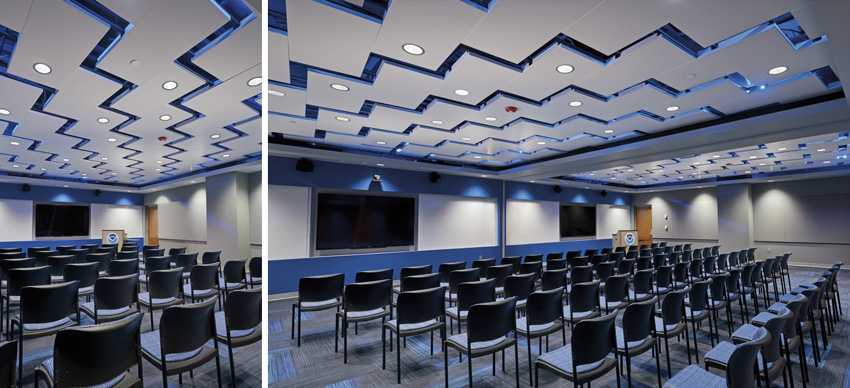New Acoustical Options in Specialty and Seamless Ceiling Systems
Metal Acoustical Ceilings
Using metal for ceilings has been a successful design solution when a particular aesthetic is sought out or extreme durability is required. Specifically, the flexibility of the material means that it can be fashioned into metal ceiling tiles in curves, clouds, panels, and planks in standard, custom, or even one-of-a-kind looks. They are available in some new 3-D shapes and torsion spring shapes as well. As such, they can create a strong visual impact or simply add a very sleek look to well-designed interior.
In addition to their good looks, metal ceilings are extremely durable and typically unaffected by many of the potential harmful effects that can be part of commercial building operations. They can be specified in a natural or painted finish, which can be selected as much for performance as appearance. Hence they are used in areas where high durability or high degrees of cleanliness are needed in addition to locations that have specific design needs.
Along with this durability and design flexibility, metal ceilings can also deliver strong acoustic performance. This is commonly achieved through a range of choices in perforation patterns in the metal. Since metal ceilings will be naturally sound reflective, the perforations allow some fine tuning in the amount of sound reflection compared to sound absorption. To aid in the absorption, acoustic fiber, mesh, or fleece can be applied on the back side of the metal tile to soak up sound and reduce echoes as needed. The size and amount of perforations coupled with the type and amount of acoustic backing determine the NRC rating and manufacturers can provide a full range of details and choices.
Metal ceilings meet other design criteria too. They are durable and very cleanable as already noted, but they can also provide high light reflectance that can help in daylighting of interior spaces. They provide great fire resistance and do not provide any organic base for mold and mildew to grow. All of these attributes help with their overall sustainability capabilities and allow them to contribute to green building rating programs. Most metal products are made from substantial amounts of recycled material as well, meaning that their embodied energy can actually be very low compared to other materials.











